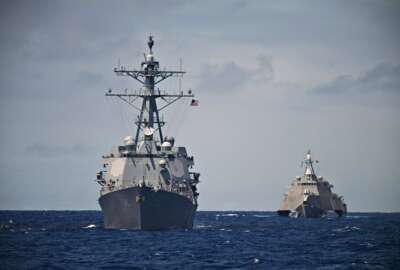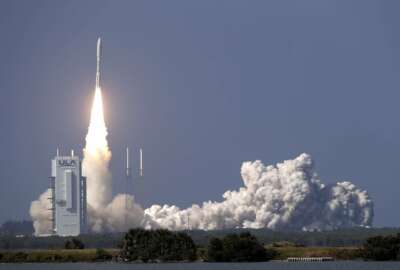
Navy hoping to keep some acquisition momentum during COVID-19
The Navy is trying to work with its industrial base and learn lessons from the crisis.
The Navy says the way it is procuring goods and services during the COVID-19 outbreak may help quicken acquisitions later on during the crisis and keep programs on target for whenever it ends.
Speaking at the virtual Sea Air Space Conference Wednesday, Navy acquisition chief James Geurts said the service is injecting money into the acquisition system to keep companies liquid with cash so they can stay afloat. The Navy is also speeding up contract awards.
“We are going to apply all the things we’ve learned during this to accelerate during the recovery phase because ships still need to come out on time,” Geurts said. “We’ve got to do the maintenance, we’ve got to continue to supply lethal capabilities to our sailors and marines and we can’t afford to lag the recovery.”
Geurts said he does not foresee the crisis affecting the Navy’s priorities after things return to normal. The Navy still wants at least 350 ships and it wants to field its Columbia-class submarine. The trick is keeping everything on schedule or close to it through the coronavirus outbreak.
“What’s important is that we don’t let the delay and disruption carry any further than it has to into the execution of our programs,” Geurts said. “There will be delay and disruption. The program teams have looked hard into where we were prior to this crisis so we can separate issues we had going in from issues caused by the crisis.”
He added that he hopes the Navy will learn from the outbreak to improve future acquisition.
“We can take this new-found agility and ways of operating to allow us to continue to accelerate,” Geurts said. “The defense industrial base is the backbone of our national security and we’ve got to make sure we can carry through all that is fantastic from small businesses to large businesses as we work through this because we are going to need all of them pulling at full strength.”
While the crisis is still going on, the Navy is using real-time reporting to find out where companies and the supply chain are vulnerable.
Geurts said the Navy is using real-time tracking to look at hot spots to see what companies might be affected next and when to expect delays on deliveries from businesses.
The Air Force recently announced it is taking similar measures to ensure its industrial base stays buoyant.
The aerospace and space industries are taking a hit from the economic slump.
Will Roper, Air Force acquisition, technology and logistics undersecretary, advocated for stimulus funding, especially for the space industry. He stated many of the Air Force’s ideas around stimulus funding were in the space sphere.
“We’ve got to send a message loud and clear that innovation is not a COVID-19 victim,” Roper said. “We will keep it immunized from this disease and we will keep it moving so that warfighters now, and in the future, have the systems they need.”
Roper said he’s meeting with Congress as often as two times a week to discuss the state of the industrial base and is reiterating to them that small suppliers need assistance.
Copyright © 2025 Federal News Network. All rights reserved. This website is not intended for users located within the European Economic Area.
Scott Maucione is a defense reporter for Federal News Network and reports on human capital, workforce and the Defense Department at-large.
Follow @smaucioneWFED
Related Stories





